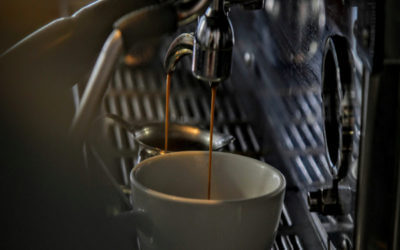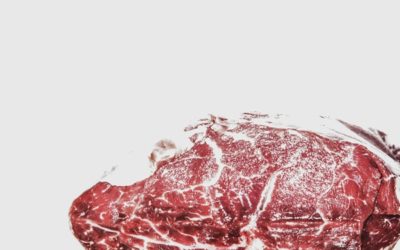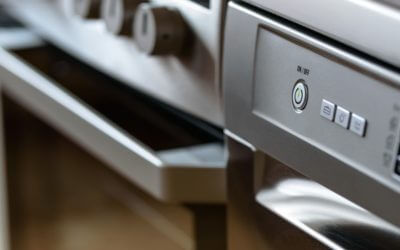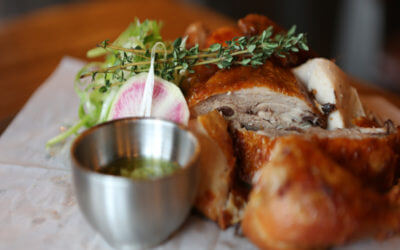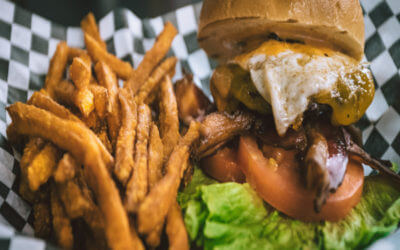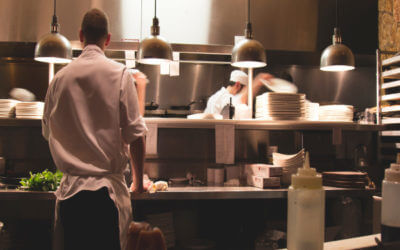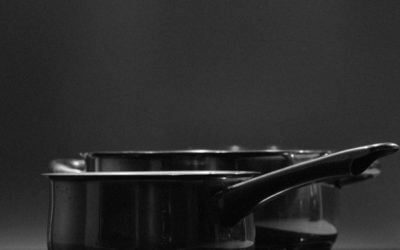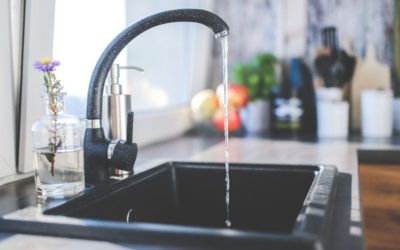How to Deep Fry Safely & Efficiently
April 12, 2019When it comes to kitchen equipment, knowing how to use it correctly is vital.
Not only does it keep your employees safe, it ensures that the food comes out well and that your equipment last a long time in good condition.
Using a deep fryer may seem pretty simple, and if everything is set up correctly it is. However, there are still tips and tricks to know, along with important safety rules. Here’s what you need to know.
The Right Temperature
Having your fryer set to the correct temperature is the first step to simple and effective cooking. The idea temperature for most foods is 350° F. Keep in mind the temperature can fluctuate, so be sure to check it several times a day.
The thermostat will tell you the temperature, but be sure to use a metal dial-style thermometer as well to make sure your thermostat is accurate.
To avoid wasting oil, you can reduce the temperature to 200° during slower times, but don’t forget to turn it back up when needed.
The Right Fryer
If you’re going to use a fryer in your daily operations, you’ll want to make sure that this vital kitchen equipment is the right model for your needs. Know whether you need a tube fryer, and open pot, or a flat-bottom fryer.
From there, you’ll need to choose the size and power source. An electric burner fryer can be great for small spaces. Finally, think about whether you need new kitchen equipment or whether a high-quality used model will work well.
When you have the right high-quality model that’s the right size, you can optimize both your speed and the money you spend on oil and upkeep.
The Right Cooking Process
When everything is set up and maintained correctly, your employees can follow a simple process for cooking. All foods should be fried from frozen, preferably straight from the freezer. Any thawing or refreezing will affect the quality of the product.
For the best results from your kitchen equipment, only fill the fry basket halfway and skim the oil regularly to remove debris. Be sure the oil reheats between batches as well.
The Right Maintenance
Of course, even with everything is cooking like you expect, there’s still cleaning and maintenance to be done. Fryer oil should be filtered every day to extend the life of your equipment (and to provide high-quality food to your customers.)
To clean the fryer, drain the kettle and rinse it with hot water to remove any food debris. Inspect valves to make sure there isn’t any oxidation of the copper, and clean the unit with a commercial cleaner designed for fryers. Drain the cleaner and rinse with water and vinegar. Drain again and wipe dry before refilling with oil.
The Right Kitchen Equipment Supplier
Of course, the first step to having high-quality fried food is to get your kitchen equipment from the right supplier. At Tipton Equipment, we’ve been serving Little Rock restaurants for many years. You can trust us to help you find high-quality new and used equipment of any type.
Need a quote? We’d love to help. Contact us today!
5 Things Every Restaurant Owner Should Do Before Buying Used Kitchen Equipment
Equipping your restaurant properly can cost a lot of money, so buying used kitchen equipment is the go-to choice for many restaurateurs. Buying used kitchen equipment for a restaurant is a bit different than buying used equipment for your home, however. You will...
Top Restaurant Technology Trends in 2018
When looking to buy restaurant supplies, you want to be on the leading edge of technology trends. This will keep your kitchen running smoothly. Let’s take a look at some of the most recent trends in restaurant supplies technology. 1. New Payment Options Who would...
5 Different Ice Shapes and Why You Should Care About Them
Ice makers are very popular in the restaurant and foodservice community because they eliminate the need to buy ice every day. And of course, adding an ice maker to your collection of foodservice equipment means you will always have ice on hand when you need it. An...
Pulping and Grinding: A Starter’s Guide to Reducing Commercial Food Waste Costs
For most restaurant owners and managers, the expenses involved in making meals are always under careful consideration. Water is needed to prepare, cook and wash food; power is necessary for food prep, cooking and cooling, and so on. However, how many of us consider...
Choosing the Right Milk Cooler: Cold Wall or Forced Air?
In a restaurant, milk is an essential to have on hand for coffee and other café-style beverages, for serving with kids’ meals, and as a key ingredient in many recipes. Keeping your milk properly chilled can be difficult without the proper restaurant equipment....
How to Choose Your Next Commercial Meat Smoker
The movies that connect with us on a personal level are the ones that linger in our memories forever. Anyone who has used a commercial meat smoker knows that they have a huge influence on the taste of a meal. You need to have just the right kitchen equipment to get a...
Are High Speed Ovens Too Good to be True?
You might have heard a few of the bold claims that foodservice equipment manufacturers have been making about high speed ovens, but they can’t be possible, right? Cooking three times as faster as regular ovens? Five times as fast? Fifteen times as fast? It may seem...
Choosing the Right Food Storage Containers for Your Restaurant
Choosing the right kitchen supplies will make a difference in your restaurant. Whether it is heavy duty kitchen equipment or food storage containers, each piece of equipment plays its own important role. Today, we are going to talk about how to choose the right food...
Tipton’s Guide to Perfect Poultry Trussing
Do you ever truss birds in your commercial kitchen? Trussing is a fantastic cooking technique because it makes poultry cook faster, look more attractive and taste better. If your commercial kitchen prepares poultry, you don’t want to miss these trussing tips. Trussing...
How to Eliminate Excess Condensation in Your Kitchen
Is your commercial kitchen getting steamy? If so, you could have more than just an uncomfortable working environment on your hands. Excess moisture in your commercial kitchen can result in the corrosion of equipment, the development of mold, and even damage to your...
The DIY Guide to Your Restaurant’s Own Garden
Stocking your restaurant supply with your own home-grown herbs and produce can truly bring your dishes to life. When it comes to food, everyone knows there’s nothing like homemade and home-grown. Having your own culinary garden, however large or small, can help you...
5 Reasons a Meat Grinder Will Set Your Burgers Apart
The more you do to prepare your foods in-house with the right kitchen equipment, the fresher and more flavorful your dishes become. There are all sorts of restaurants offering fast-food style burgers, but some diners are looking for the real deal. A fresh, juicy...
Pest Preventions to Implement in Your Commercial Kitchen
Restaurant pests: it’s something that few people want to think about. Like it or not, pest management is an essential consideration for every commercial kitchen. Offering food, shelter and water, the unprepared commercial kitchen naturally provides everything pests...
Choosing the Right Material for Your Cooking Equipment
Kitchens are very unique to their chef. Just like a car mechanic has a toolbox unique to them, so is the cooking equipment in a kitchen. And over time, the same cooking equipment become a natural extension of the chef. What tools are you using in your kitchen? It...
Kitchen Hacks for Your Home
Some people are naturally good at certain skills. We all know someone who is naturally book smart, athletic, or musically inclined. What makes you jealous of them is how easy they make tasks seem compared to you. One skill might be cooking. Your dream may not be...

